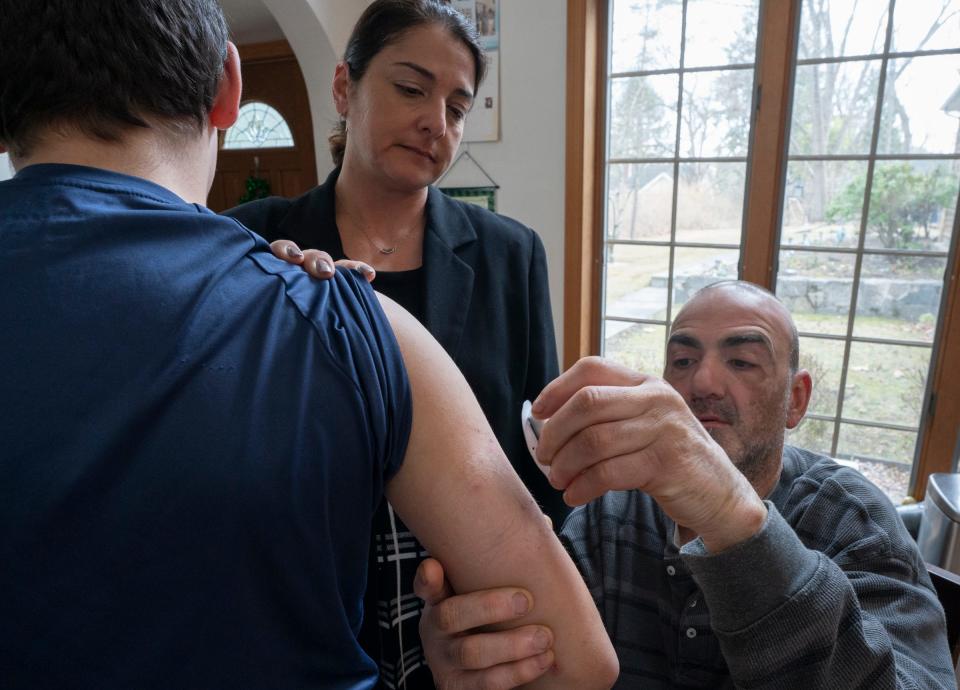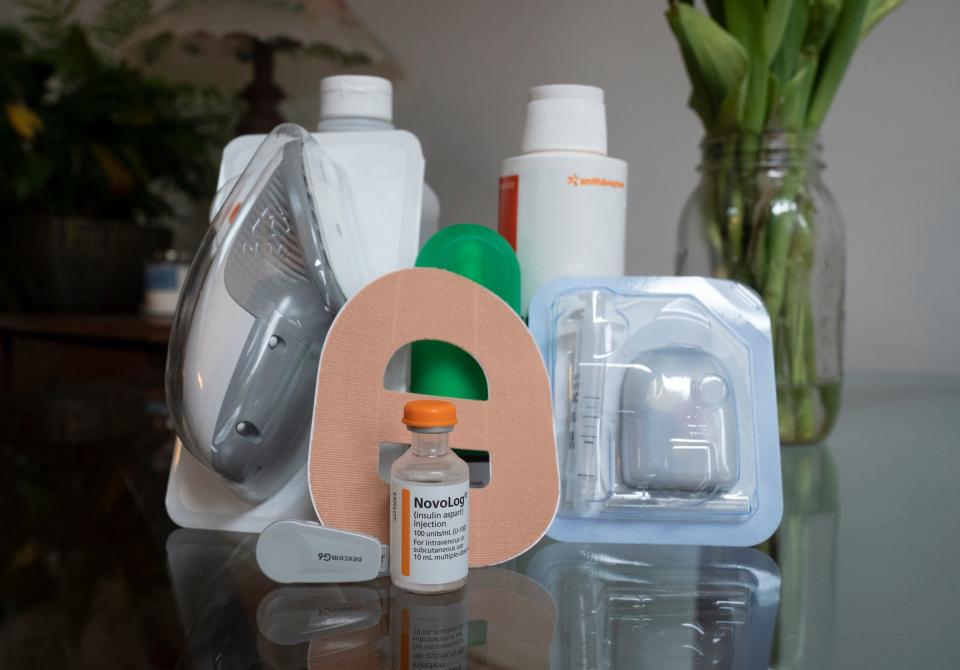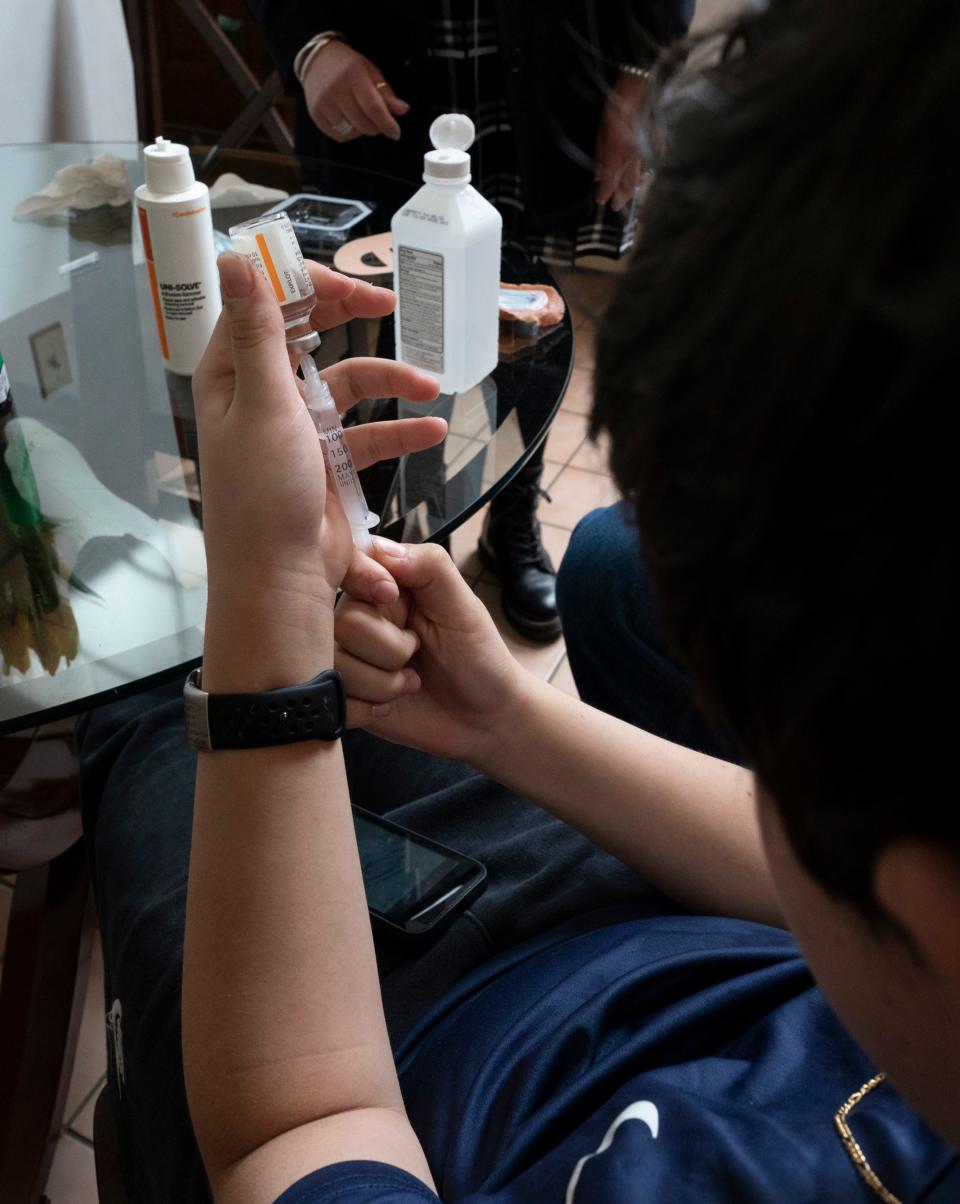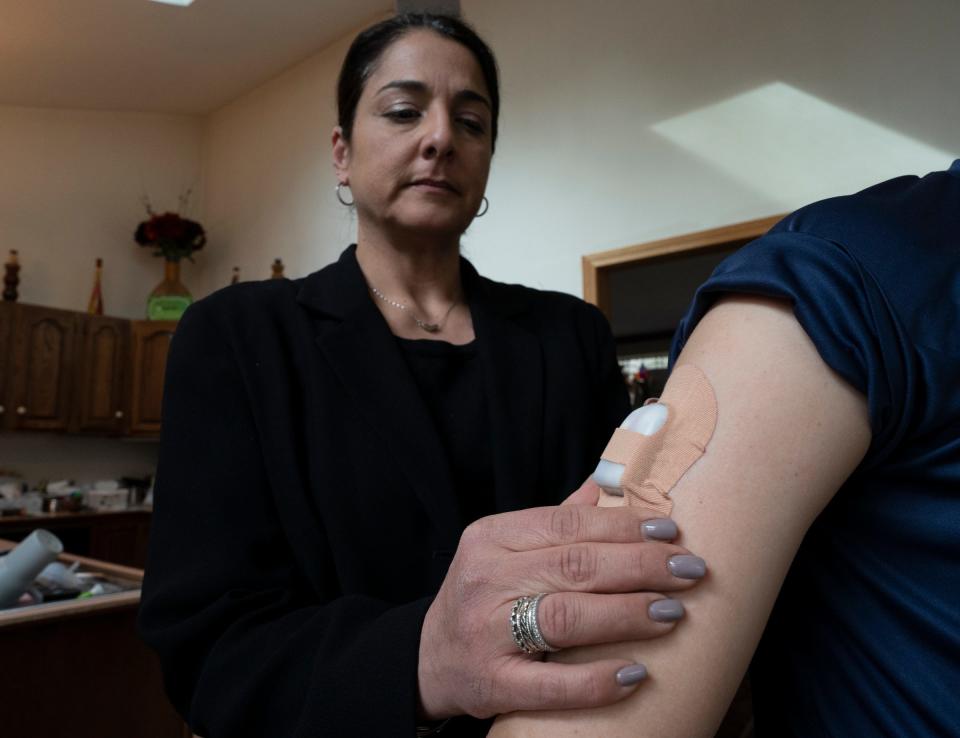A billing dispute means a mom must pay nearly $1,000 a month for her son's diabetes care
For Gianluca Cefalo, a new insulin pump has allowed him to reclaim his life.
The 12-year-old boy with Type 1 diabetes no longer visits the school nurse for an insulin shot before lunch. He doesn't worry about his blood sugar spiking or dropping when he sprints on the basketball court. He looks forward to baseball after taking last season off over frustration managing his blood sugar.
But a dispute between his family's health insurer and the company that makes the pump leaves his mom, Maria Chiodi, with a monthly bill of $872. Her family is struggling to afford the technology, she said.
"It's a little absurd to me as to how these two companies can't work together," said Chiodi, who lives in Millwood, New York with her husband and two children.
Chiodi's case is an example of how difficult it can be for families to afford the cost of medical care needed for diabetes. While the three largest makers of insulin plan to slash prices, the cost of the medication is just one of many expenses people with diabetes must cover.
Diabetes supplies such as test strips, glucose monitors and insulin pumps are difficult to afford. A 2020 survey by advocacy group T1International found people with some health insurance coverage managing diabetes paid nearly twice as much out of pocket for devices such as insulin pumps and glucose monitors than they did for insulin.
"Insulin is really just the tip of the iceberg," said Elizabeth Pfiester, founder and executive director of T1International.

While people with robust health insurance paid less out of pocket, the TI survey found costs added up quickly for those who were uninsured or had skimpy coverage. A study by the American Diabetes Association found the typical family pays $7,510 each year in health care expenses for each child with diabetes.
Insulin-dependent patients who don't use or can't afford pumps need to administer the medicine through syringes or insulin pens. They also need to use testing strips for blood glucose and ketone levels, and some use glucagon kits to treat severe low blood sugar.
Beyond medical expenses and supplies, the family's costs add up for groceries. One type of low-carbohydrate bread can cost as much as $9 per loaf and a specialized low-sugar milk brand for people with diabetes is far more expensive than regular milk, Chiodi said.
"These things often end up costing patients and their families a lot of money," Pfiester said. "It really is breaking budgets or causing people to not take the medicine they need, which is also very dangerous."
Diabetes care:How much can supplies cost?
Youth diabetes to surge: Can it be prevented?

No more insulin injections but dispute leaves family with nearly $1,000 monthly bill
Gianluca began using a new pump made by Massachusetts-based Insulet this year based on the recommendation of a diabetes specialist. He no longer carries insulin pens for daily injections. He doesn't need to balance levels with fast-acting insulin at mealtimes and longer-acting insulin overnight.

The Ominpod 5 is paired with a sensor that reads how much insulin the boy needs. It continuously delivers tiny amounts of insulin to his body rather than a larger, single dose. The medical equipment comes with an adhesive patch that he places on his skin and a remote, smartphone-sized controller to adjust levels.
His mom changes the pod every three days and fills it with insulin.
"It almost mimics his pancreas function," Chiodi said. "Instead of large amounts of insulin being injected into the body, this new pump gives you very small increments of insulin throughout the entire day."
When her son's specialist informed her about the medical benefits of the pump, Chiodi was convinced Gianluca needed it.
Her optimism was soon dashed when she learned how billing codes, contracts and product classifications meant she would have to pay for the product herself.
Her insurer, Empire Blue Cross Blue Shield, told her the Omnipod 5 is considered durable medical equipment. That is how the insurer classifies and pays for insulin pumps.
But Insulet describes it as a pharmacy benefit. In order to get the pump, she must order it through her pharmacy as if the medical equipment is a prescription drug.
"I have to get another prescription for the insulin and manually load the insulin into the pods every three days," Chiodi said.

Her insurer arranged a three-way call with her and the company to figure out a way to pay the the equipment, but that didn't work either.
Chiodi initially thought she'd pay the Omnipod's cost for the first two months until she met her insurance plan's $1,500 deductible, which is the amount a person must pay out of pocket for a drug, device or medical service before coverage kicks in.
But because of this dispute, none of her payments have been applied to her insurance plan's deductible.
She filed an appeal with her insurance plan that included a doctor's letter of medical necessity, but the appeal was rejected. She wrote a letter to the board of her husband's union, which sponsors the family's health insurance plan. She also filed a complaint with the New York State Department of Financial Services.
So far, all her efforts to get coverage have failed.
"I have to pay $872 every 30 days because the two organizations – the insurance company and the manufacturer – can't work together on a billing code," she said.
Diabetes care gets major update: American Diabetes Association recommends more aggressive approach to weight loss, cholesterol
Insulet sales surge on pharmacy switch
When contacted by USA TODAY, Insulet officials said Chiodi's case appears to be an outlier. The company offered to put her in contact with a member of its customer care team.
"Though the process where health insurers determine coverage for new medical technology takes time, we are pleased that more than 90% insured people in the U.S. have insurance access today," spokeswoman Angela Wiczek said via email.
While other insulin pumps are classified as durable medical equipment, Wiczek said Omnipod 5 is a "wearable, disposable technology which can be conveniently picked up at the pharmacy."
She acknowledged some health insurers are "still in the process" of deciding whether to cover this as a pharmacy benefit. The company's older insulin pump, called the Omnipod classic, had been covered as durable medical equipment by insurers.

Insulet's annual report filed with the Securities and Exchange Commission shows the Omnipod has a higher average price when it's sold through pharmacies. The company said the price is higher, in part, because it includes a smartphone-type controller.
The Omnipod 5 and another pump, the Omnipod DASH, fueled a 36% increase in sales last year to $884.8 million. However, those sales were offset by rebates the company paid to pharmacy benefit managers – which are pharmacy middlemen that command steep rebates in exchange for favorable placement on private insurance plan formularies.
A Senate Finance Committee investigation in 2021 found insulin price increases last decade coincided with lucrative rebate demands from insurers and pharmacy benefit managers.
Insulet said it paid more than $247 million in rebates last year, which was about three times the amount the company paid in 2020. Wiczek would not reveal details about the company's PBM contracts but said the increase in rebates was due to higher sales.
'My son's life depends on this'
Chiodi is thankful her son can uses this new medical technology that makes his life more convenient.
When he is active on the basketball court, he switches the pod, controlled by a remote, smart phone-like device, to activity mode so he can get the right amount of insulin. He also no longer needs to carry insulin pens when he attend events such as late-night bar mitzvah parties.
While the convenience makes life easier, Chiodi said the medical benefits are what convinced her she needs to do whatever it takes to make sure he has access to this technology.
"I'm going to try to figure out a way, even if I have to get a second job to do this," Chiodi said. "My son's life depends on this. The qualify of his life. The preservation of his organs. He's only 12. He's got a long life ahead of him."
Ken Alltucker is on Twitter at @kalltucker, or can be emailed at alltuck@usatoday.com
This article originally appeared on USA TODAY: The cost of diabetes care: NY family struggles to pay for insulin pump

 money
money 